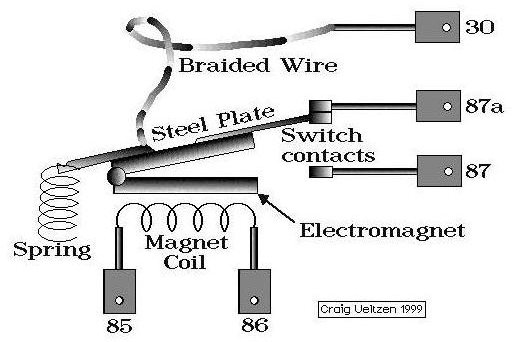Relay Mechanism Fully Explained
Introduction
Electronic circuits can function properly only when they are operated in their specified voltage range. Beyond this range the circuit may get instantly or permanently damaged. So how do you obtain from a circuit, a switching voltage output, which may be much higher and dangerous than the operating voltage of the circuit?
This is where electrical relays comes into action. The operating voltage of a typical relay is acquired from the circuit’s output itself, but its external ‘contacts’ can handle and toggle voltages much higher and even at AC mains potential. This voltage is also kept isolated, so that no harm is done to the control circuit.
What is a Relay
A general type of relay can be better understood through the following description:
- It basically consists of a coil and a strip of metal kept at a close proximity to the coil.
- The coil is wound over a solid iron cylinder. When a DC potential is applied to its two ends, the iron core is instantly magnetized and the entire assembly acts like an electromagnet. The strip of metal ( iron ) is immediately pulled towards the coil and is held tightly till the coil voltage persists.
- One end of the metal strip is pivoted using a spring, so that it can be pulled back to its original position, in the absence of a relay coil voltage. In modern compact relays, the use of a spring is avoided. Their specially designed metal strip’s inherent tension is utilized to restore its position.
- The other end of the metal strip terminates into a brass ‘contact’, riveted firmly to the strip.This brass strip toggles between two parallel brass posts, and connects itself alternately, during a presence or an absence of relay coil voltage.
- Thus by applying a small DC voltage to the relay coil, a much larger voltage can be made to flow from the central movable metal strip to one of the parallel brass posts.
- Normally in the absence of a coil voltage, the central metal strip is held connected to one of the brass contacts, and is called normally closed ( N/C ). The other brass post is obviously called normally open ( N/O ).
- Today’s modern compact relays require very low coil current to operate, and thus are very sensitive. But their ‘contact’s’ rating is limited and cannot switch heavy currents. For this, bigger size relays are available but they require larger coil current to operate.
- Normally in electrical relays the coil current can be calculated simply by dividing the coil voltage by the coil resistance.
Image courtesy: www.classictruckshop.com/.../bosch/relay.jpg
